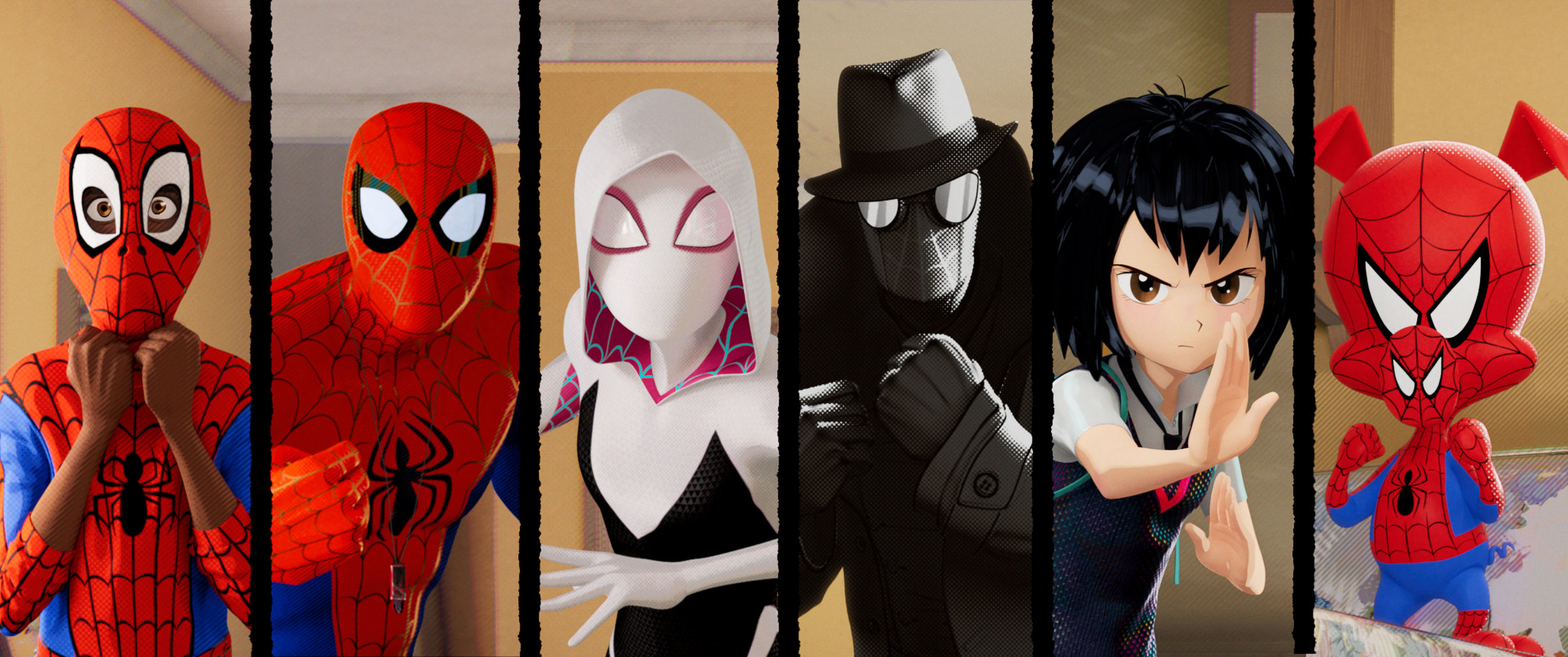Talking "Spider-Man: Into the Spider-Verse" on All Things Considered
Chris Klimek
Miles Morales, Peter Parker, Gwen Stacy, Spider-Man Noir, Peni Parker, and Peter Porker. (Sony)
Look, we didn’t think I’d actually get to interview everyone I had on my to-interview wish list. That never happens.
Only this time it did, which is how I came to have five different voices in my four-and-a-half-minute All Things Considered piece on the animation in Spider-Man: Into the Spider Verse, a movie I cannot wait to see again.
All of them—producer Chris Miller, producer/co-screenwriter Phil Lord, co-screenwriter/co-director Rodney Rothman, co-director Peter Ramsey, and finally, Eisner Award-winning comic book writer Brian Michael Bendis, who (with artist Sara Pichelli), created Miles Morales, the primary hero of Spider-Verse—had smart, illuminating things to say. I spoke to Bendis solo and Lord & Miller and Rothman & Ramsey in pairs, and pretty soon I had something like 75 minutes of good tape for a story that could accommodate mmmmaybe two-and-a-half minutes of that.
It was an epic job of cutting, followed by more frantic cutting, and then more surgical cutting. My editor, Nina Gregory, and news assistant Milton Guevara, showed me how radio pros get things done on deadline. Bob Mondello, who’d suggested the piece in the first place, gave me some vocal coaching in the booth.
I wish we could’ve used more of what all those smart, imaginative people had to say. I wish we could’ve made the segment 15 minutes long. But I’m very happy with what we managed to pack into about 240 seconds.


